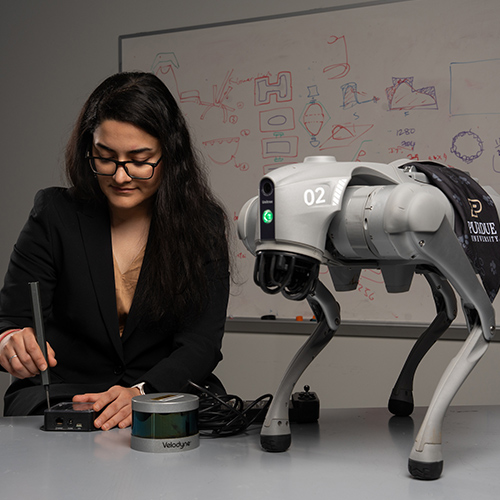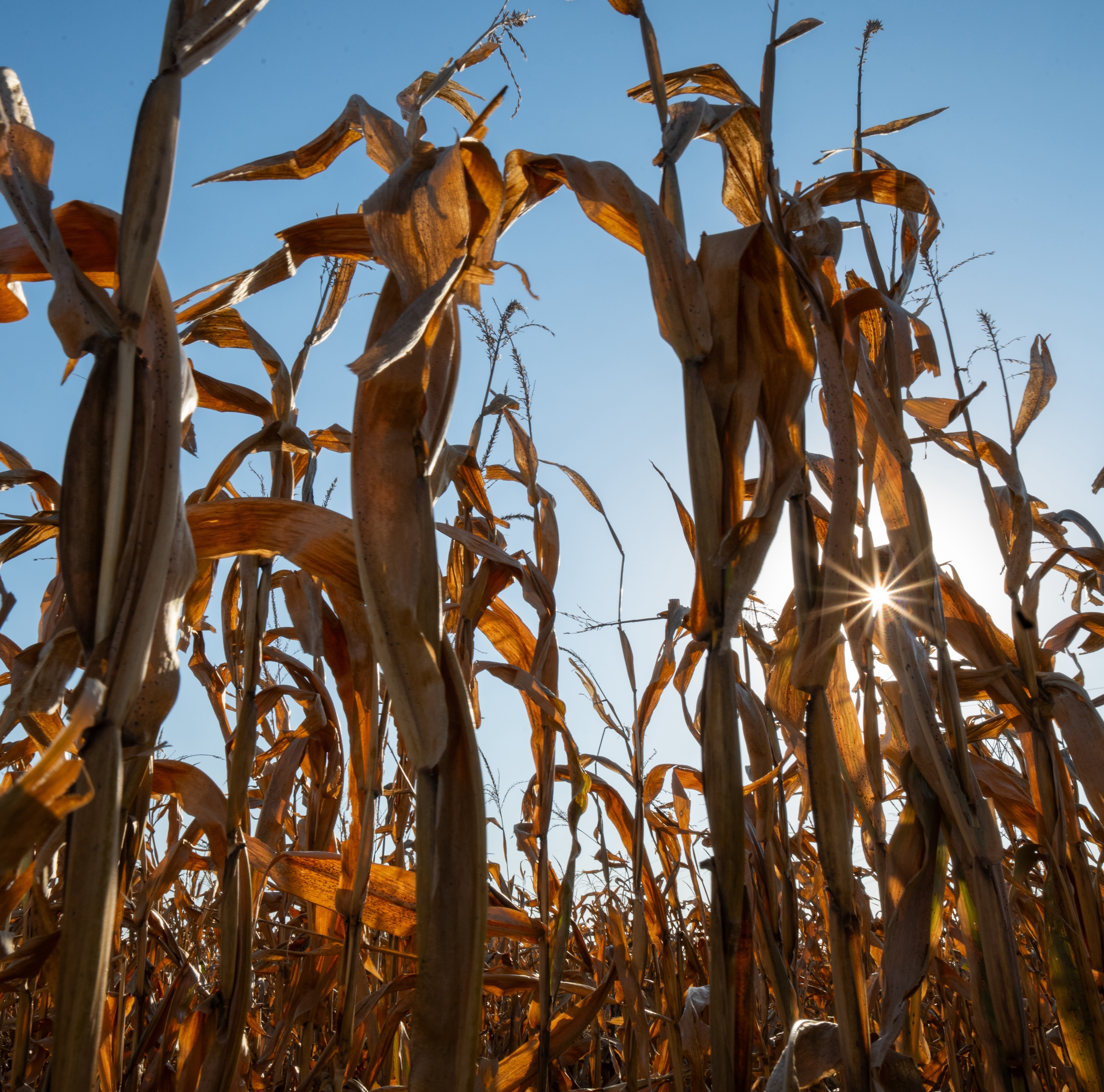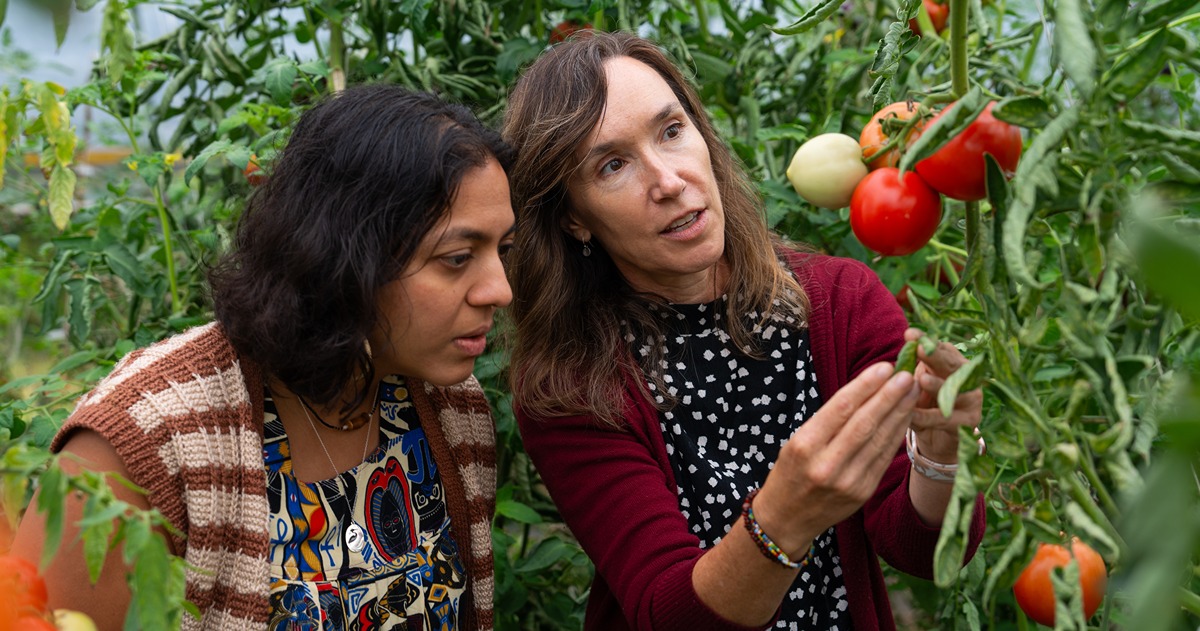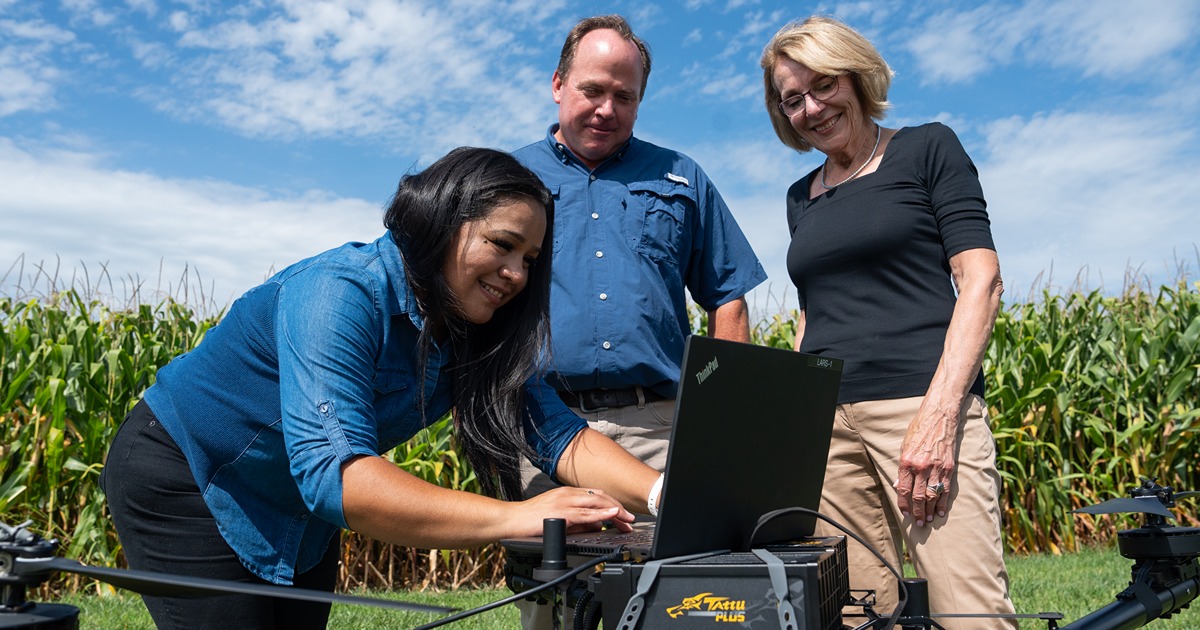Phosphorus Cost Comparison Tool
Have you found your self trying to compare the costs of P2O5 in different phosphorus fertilizers?
Several reasons come to mind why we would want to calculate the value of P2O5 in different phosphorus (P) fertilizers. One question we are asked frequently concerns the cost of 10-34-0 when used as a starter fertilizer. What is the extra cost of using 10-34-0? Another common question is which is a cheaper source of P; monoammonium phosphorus (MAP) or diammonium phosphate (DAP)? You cannot tell just from price as $/ton.
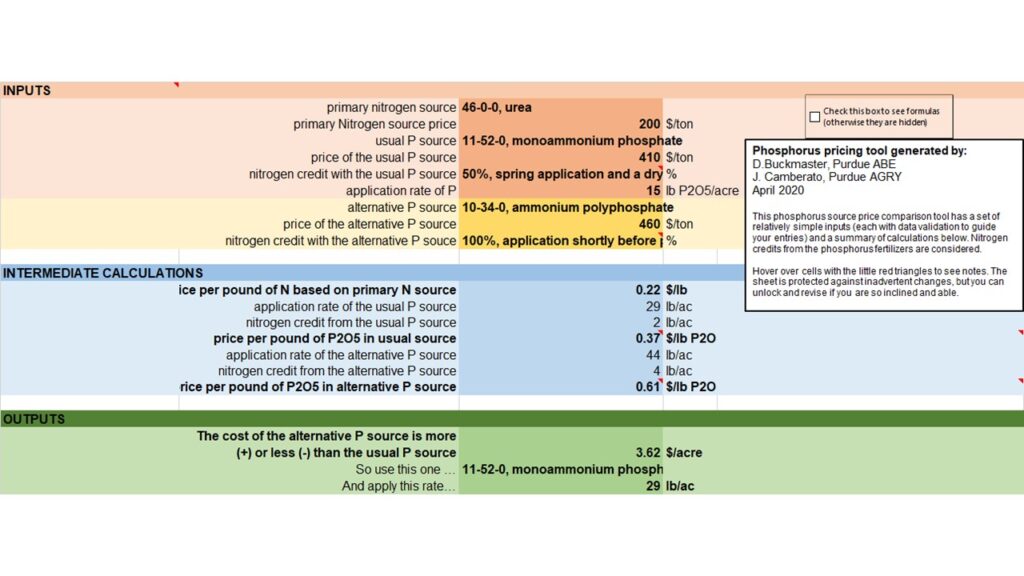
This user-friendly Excel spreadsheet allows easy calculation of the comparative cost of P2O5. Briefly here is how it works: in the comparison, the value of the N from is subtracted (from the price) to calculate the P2O5 price. The N value is based on how much of the N applied with the P fertilizer is estimated to be available to the crop and the cost of N in an at-plant or side-dressed N application. Unfortunately, in most situations less than half of the N applied in late-fall, winter, or early-spring remains in the soil for crops planted in April and May so it should not always be fully credited. After crediting the value of N in the P fertilizer, the remaining cost of the fertilizer is attributed to the P2O5 content. To use the calculator just choose the fertilizers you wish to compare and input their price. Then choose your timing of application to determine how much N is lost. The least expensive choice will be shown under Outputs.
This spreadsheet is protected so you can’t accidentally change (mess up) the formulas. It has a top to bottom structure and all inputs are neatly gathered at the top with calculations below.


